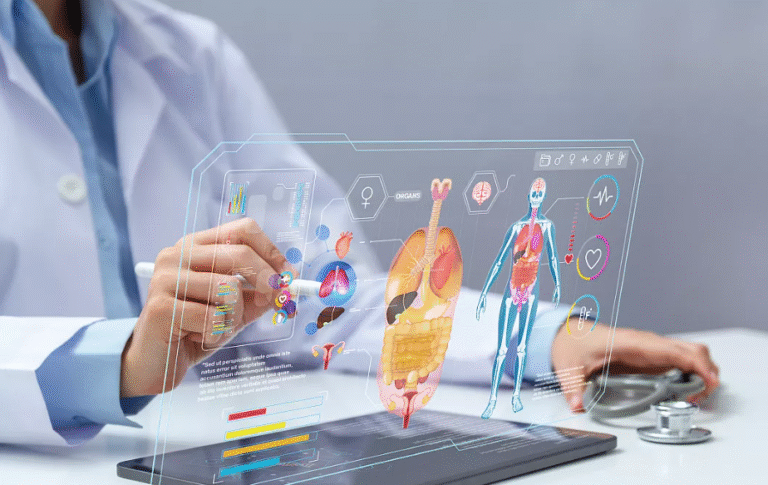The Role of Robotics in Healthcare
Robotics is increasingly integrated into healthcare, influencing various aspects from surgery to patient management. Surgical robots enhance precision during procedures, promoting faster recovery and less discomfort. Additionally, robotic assistants gather critical health data, supporting personalized treatment plans. Automation streamlines hospital operations, reducing the potential for human error. As these technologies evolve, their implications for patient outcomes and healthcare efficiency warrant closer examination. What advancements lie ahead in this rapidly changing landscape?
Advancements in Surgical Robotics
As surgical procedures become increasingly complex, advancements in surgical robotics have transformed the landscape of healthcare by enhancing precision and minimizing invasiveness.
Robotic precision allows surgeons to perform intricate operations with greater accuracy, reducing the risk of complications. Consequently, minimally invasive techniques lead to shorter recovery times and less postoperative pain, empowering patients with improved outcomes and a quicker return to their daily lives.
Enhancing Patient Care With Robotic Assistants
While the integration of robotic assistants in healthcare may initially seem like a futuristic concept, it has already begun to reshape patient care in profound ways.
Robotic companions facilitate enhanced patient monitoring, ensuring real-time data collection and analysis. This technological advancement not only optimizes individual care but also fosters a more responsive healthcare environment, empowering patients and providers with valuable insights into health management.
See also: The Role of Quantum Computing in Advancing Technology
Streamlining Hospital Operations Through Automation
The implementation of automation technologies within hospital settings is rapidly transforming operational efficiency.
Robotic inventory systems enhance stock management accuracy, reducing human error and freeing staff for patient care.
Concurrently, automated cleaning solutions ensure higher hygiene standards, minimizing infection risks.
Together, these advancements streamline workflows, optimize resource utilization, and ultimately contribute to a more responsive healthcare environment, aligning with the growing demand for operational freedom in medical facilities.
The Future of Robotics in Rehabilitation and Therapy
Robotics is poised to revolutionize rehabilitation and therapy, enabling more personalized and efficient patient care.
The integration of robotic exoskeletons facilitates enhanced mobility for patients recovering from injuries, while virtual therapy provides immersive environments for cognitive and physical rehabilitation.
This technological evolution promises to empower patients, allowing for tailored interventions that adapt to individual progress and needs, ultimately improving recovery outcomes.
Conclusion
As the saying goes, “A stitch in time saves nine.” The integration of robotics in healthcare exemplifies this adage, as it not only enhances surgical precision and patient care but also streamlines hospital operations through automation. The ongoing advancements in this field promise to further improve rehabilitation and therapeutic practices. By embracing these innovations, healthcare providers can optimize patient outcomes, reduce operational inefficiencies, and ultimately foster a more effective and responsive healthcare system.




